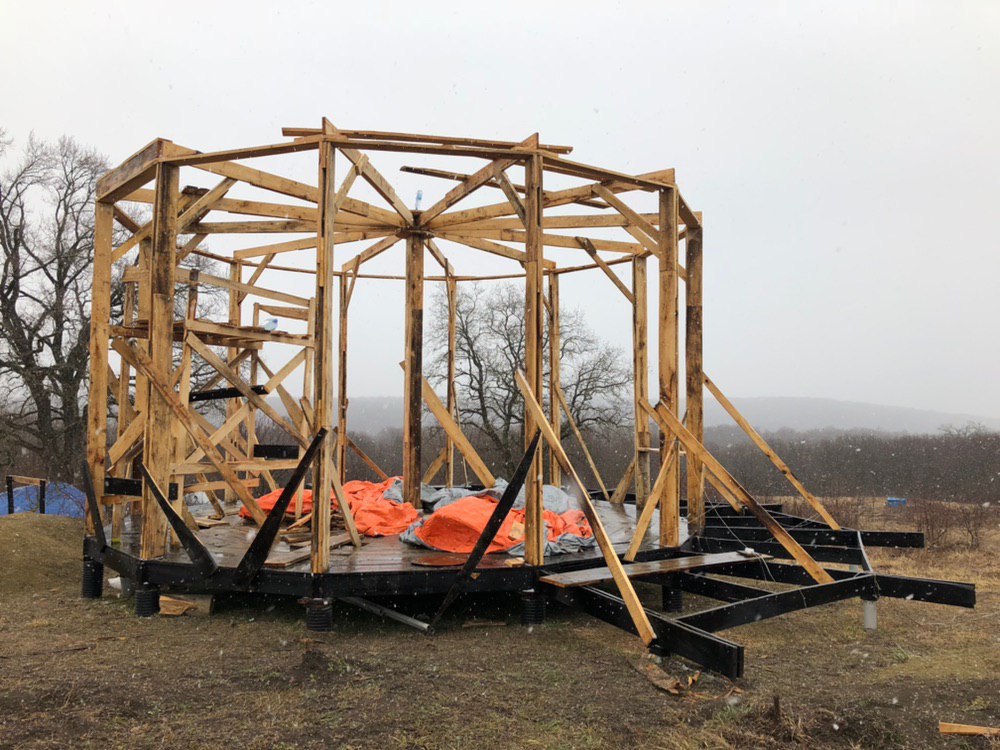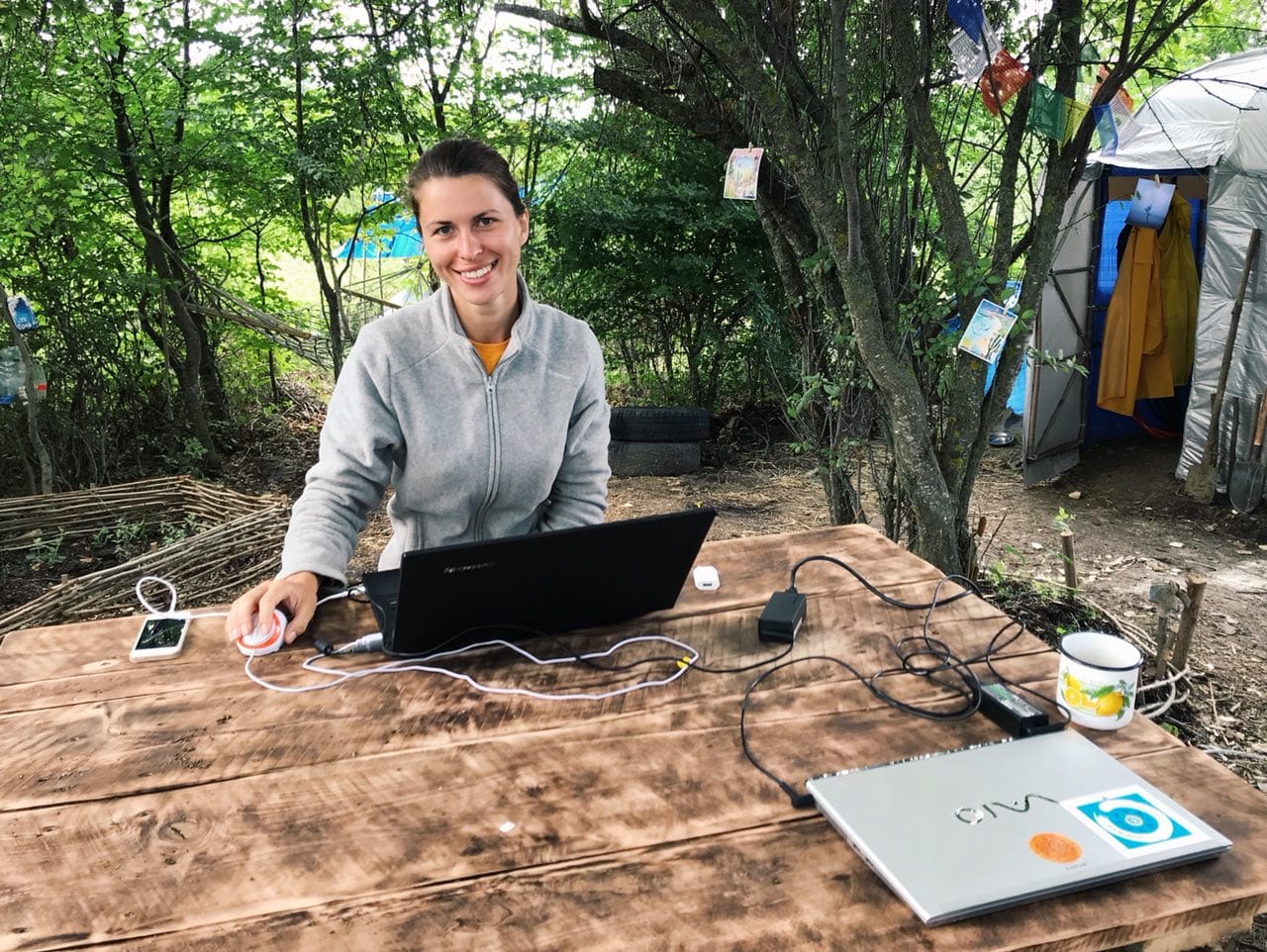The Sunsurfers’ Ecovillage in Kakheti
Few people have heard about the Georgian eco-village being built by the Sunsurfers community in the Cheremi area of Kakheti. GEORGIA TODAY decided to find out more.
The Sunsurfers community is a group of travelers who share the same values and want to make positive changes for the planet. They are committed to a healthy lifestyle that rejects alcohol and the use of drugs and aims for self-development in different spheres. The community gathers people from different backgrounds, countries and religions thanks to retreats and gatherings.
One of their main projects is the development of the new Georgian eco-village. The information we acquired comes from an interview with Sasha Wickenden (co-funder of the Sunsurfers community), given to Sasha Postovar, with the support of Marat Chasanov.
The material construction of the village
After the acquisition of 9.1 hectares of land in November 2017, the volunteers began the construction of the village in July 2018. The main goal of such a project is “to cultivate self-awareness and unleash the potential of each person. For this purpose, yoga retreats, community gatherings, universities of free-spirited nomads, and workshops on eco-building and permaculture will be held at this eco-settlement,” explains Wickenden.
Even though the construction of the village is still in progress, some people are already living there. They already have a water supply, solar power station and 3G internet. According to Sasha, “about 100 volunteers from 20 countries of the world have already invested their energy, time and skills to set up the first foundations of the eco-village.” They are currently working to build the first warm house, bath and cellar to enable the residents to live comfortably in winter. There will be separate houses made of natural materials for permanent residents, and guest houses for visitors.

The philosophy of the eco-village
Sasha explains that people living in eco-villages experience a complex interconnection system since they face many different challenges such as “common values, rules, settlement economics, common expenses, self-reliance, resolving issues, resolving disagreements, personal space, interaction with neighbors and with the state [or] the education of children,” for example.
Various reasons push people to live in eco-villages: they can be attracted to life in nature, life outside the “system,” the ability to grow organic food, having a healthy lifestyle and a calm mind, being eco-friendly, living with like-minded people and sharing, the ability to educate future generations in a different way or simply a wish to escape a life that does not fit them and develop themselves on a different basis.
In the Georgian eco-village, there are six rules that should be observed:
1: Do not kill.
2: Do not steal.
3: Be truthful.
4: Do not consume alcohol, tobacco or other drugs.
5: Abandon promiscuity.
6: Abandon competition with others.
The eco-village aims at developing the people living there, not only spiritually, but also in terms of an alternative system of education for children, alternative ways of growing products such as permaculture, and learning to construct objects with natural materials, among many other things. According to Sasha, people can live “in ecological and minimalistic harmony with nature, […] use natural products in everyday life and get closer to the zero-waste lifestyle.”

The village lifestyle
Living in such a place implies being in specific economic and political systems. In terms of governance, Sasha is working on the project of a “sociocracy” where people are divided into groups called “circles” within which they all elect their circle leader who will be part of the “higher circle” of leaders. To make important decisions that concern everyone, they discuss them at general meetings according to the principle of “the absence of basic objections,” which means that everyone agrees with the decision. Of course, this system will have to be tested and adapted.
As for economic survival, they have already reflected on different sources of income: they will rent or sell parts of the land and houses to inhabitants of the village and the money received “will be spent on […] roads, electricity, water, a yoga dome, school, garden, fruit forests, planting and goats.”
Sasha explains that “the second source of income is educational activities: yoga retreats, Sun-Universities, permaculture and eco-construction courses, and school. The third source is the eco-production of honey, herbs, and organic fruits and vegetables.”
To ensure a minimum harmful impact on the environment and animals, the village will be entirely vegetarian. They will have the minimum number of animals that give dairy and wool and they will concentrate on growing organic fruits and vegetables according to the season and to permaculture methods. However, Sasha says that “there is no goal to achieve 100% self-sufficiency in terms of food. Buying some products from local farmers will help establish good neighborly relations, support the local economy, share experiences and help us to not be isolated from the outside world.”
In terms of education of children, no specific plan has yet been made but Sasha is thinking about a system in which the eco-village school will welcome children from inside and outside the village so that they can learn from each other.
Even though people have already begun to live there, the eco-village is currently under construction and many things are likely to change since new people will come with new ideas.
One thing on which Sasha insists is that they “do not seek to run away from the world. We do not plan to build fences, to hide from our neighbors, nor close ourselves off in our own bubble. On the contrary, we plan to invite as many people as possible to show how the world could be. Not in the way we describe it. But by the way we live it.”
Those interested in the project can support it by making direct donations. It is also possible to go there and volunteer for a minimum of one week.
Here is the link to apply to be a volunteer:
More information can be found here: www.sunsurfers.ru/en/
By Gabrielle Colchen
Images source: Sunsurfers Community












